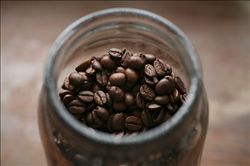Fruit sour Bolivian snow vein manor coffee flavor varieties Introduction
Mo actively promoted the "democratic and cultural revolution" and carried out major changes in the political and economic fields, such as the establishment of a constitutional assembly, the nationalization of oil and gas resources, land reform, and so on. In January 2009, Bolivia held a referendum to adopt a new constitution. On December 6 of the same year, Poland held the first national election since the promulgation of the new constitution, and President Morales was re-elected with 64.2% of the vote. The ruling party, the Movement for Socialism, won the majority of seats in the Senate and House of Representatives. In 2011, Poland successively broke out the "fuel price storm", protests caused by rising prices and large-scale demonstrations against the government's road construction, but the political situation remained overall stable. Since 2012, the Bolivian government has increased public expenditure, focusing on assisting small and medium-sized enterprises, strengthening land management, restricting land mergers and acquisitions, promoting diversification of oil and gas export markets, reducing fuel subsidies and raising fuel prices, efforts have been made to promote energy mine production and infrastructure construction, and major progress has been made in drug control. However, social conflicts have increased, and miners, medical workers, buses, taxi drivers, indigenous people and police have held demonstrations one after another. In October 2014, Bolivia held presidential and parliamentary elections, and Morales won re-election in the first round with 61% of the vote. The ruling party, the Movement for Socialism, continues to maintain control over both the Senate and the House of Representatives. At present, the political situation in Poland is generally stable, but at the same time, it is also faced with challenges such as maintaining unity within the ruling party and social organizations and frequent social conflicts.
Parliament
Congress consists of the Senate and the House of Representatives. Congress has the power to pass and amend laws, to examine the qualifications of members, to deal with lawbreakers, and to impeach government ministers. The House of Representatives has 130 seats, which are distributed according to the proportion of the population of each province. 68 members of the House of Representatives are directly elected by voters in various districts, and the rest are elected in the general election. Candidates who have reached the age of 25, have served in the military, have no criminal record and are proposed by political parties or legal groups may run for election. There are 36 seats in the Senate, 4 seats in each province, and senators are directly elected by general election. Only citizens who have reached the age of 35 and are eligible to be elected members of the House of Representatives can stand for election. Each Congress has a term of five years. The speaker of the Senate and the House of Representatives shall be elected by the two houses respectively for a term of one year and shall be eligible for re-election. Current Senate Speaker Jose Alberto Gonzalez Samaniego (Jos é Alberto Gonzales Samaniego), House Speaker Lily Gabriela Monta ñ o Montano Biania (Lily Gabriela Monta ñ o Via ñ a), took office in January 2015
Bolivia is 1/3 of the Andean mountains, rugged terrain, mainly road transport, accounting for more than 85% of transportation. The main railway and road networks are concentrated in the west, and remote areas rely on air communication. But road coverage is the lowest in South America. And there is also the Ronggas Highway, the world's first insurance road known as the "road of death". There is no developed economy here, and it is one of the poorest countries in South America. However, with its beautiful lake scenery and unique scenery of the Andes, the Uyuni Salt Lake, known as the Mirror of the Sky, is a wonder of the world.
We know that Arabica coffee cannot be grown in cold places above 2000 meters above sea level. if the altitude is too high, coffee trees will frost because the temperature is too low. So Bolivian coffee is mainly grown in the Yungas region northeast of La Paz. It borders the Amazon basin and is about 1500-2500 meters above sea level with an average annual temperature of about 10-15 ℃. Therefore, it ensures the suitable temperature for the growth of coffee and protects the coffee plant from frost. In addition, the Bolivian coffee growing area has a distinct dry and wet season and fertile soil, which is a paradise for the development of boutique coffee. Bolivian coffee is usually picked by hand and is mostly processed by washing.
The early Bolivian coffee was of low quality and the market was very poor. Usually the picked coffee fruit is bumped all the way to the processing plant after a simple peeling treatment. Due to the imperfect infrastructure, the traffic is underdeveloped. Coffee farmers have to overcome the rugged mountain road and transport the beans to the higher altitude area of La Paz for washing. If the coffee fruit is not delivered to the processing plant in time, it is easy to ferment and rot on the wet mountain road. As a result, the coffee of good quality has been destroyed.
Bolivia has made a lot of efforts to improve the quality of coffee, stimulate the enthusiasm of coffee farmers and make coffee farmers have a deeper understanding of fine coffee. After the introduction of the COE competition, in the first COE competition held in 2004, there were 13 boutique bean cups with a total score of more than 84 points, and the champion bean score was as high as 90.44 points. In addition, in order to solve the problem of untimely post-processing, a washing treatment plant has also been built in Yanggas area. Let the freshly picked coffee be post-processed as soon as possible to prevent the decline in quality caused by transportation. Coffee farmers are also constantly refining their planting techniques. In short, Bolivia has finally completed a magnificent turn in quality through its own efforts in all aspects.
Bolivia not only has a unique growing environment, but also has an excellent variety of coffee-Typica. In the past two hundred years, the main variety of coffee in Yanggas area is the ancient Tibica. Tibica coffee has a balanced and soft flavor, with lively aroma and rich sour taste. Unfortunately, the low production of Tibika and poor disease resistance have led to low coffee production in Bolivia. There are even fewer opportunities to taste Bolivian coffee. So in order to increase coffee production, Bolivia, like other Central American countries, began to experiment with growing Kaddura and Catuai. Kaddura variety has high yield, high quality, rich sour taste and resistance to leaf rust. Kaduai variety has high yield, strong environmental adaptability and tolerance to diseases and insect pests. Planting these two varieties is expected to increase the yield as much as possible while ensuring the flavor quality.
The overall taste of Bolivian coffee is rich and balanced, the aroma is rich and unique, similar to the mixture of flower and fruit aroma, impressive. The perennial low temperature environment makes the coffee fruit grow slowly, compact enough, the aroma is also charming, the flower aroma is obvious, the acidity is medium and low, but the feeling is not monotonous, on the contrary, it is soft and fresh, with the sour taste of citrus fruit.

Important Notice :
前街咖啡 FrontStreet Coffee has moved to new addredd:
FrontStreet Coffee Address: 315,Donghua East Road,GuangZhou
Tel:020 38364473
- Prev

Introduction to the characteristics of Costa Rican Fenghuang Manor Coffee Variety and Flavor
Coffee is an important economic source of Costa Rica. It was introduced in 1808 and has been cultivated for 200 years. Costa Rica has 1x3 population invested in newly developed villa sarchi, newly developed villa sarchi and coffee-related industries. Colombians say that coffee has changed the country and enjoyed a rich environment, and coffee has indeed made an outstanding contribution.
- Next

Introduction to the characteristics of coffee flavor and taste in Arusha Coffee Manor
The coffee beans produced here are all exported from Kilimanjaro, but in addition to Mount Kilimanjaro, there are several major coffee producing areas throughout Tanzania, there are more small farms in other areas, and most small farms also have a planting area of several hundred mu. Some have their own washing equipment and bean drying farms, but the grading treatment still has to go through large-scale treatment.
Related
- Does Rose Summer choose Blue, Green or Red? Detailed explanation of Rose Summer Coffee plots and Classification in Panamanian Jade Manor
- What is the difference between the origin, producing area, processing plant, cooperative and manor of coffee beans?
- How fine does the espresso powder fit? how to grind the espresso?
- Sca coffee roasting degree color card coffee roasting degree 8 roasting color values what do you mean?
- The practice of lattes: how to make lattes at home
- Introduction to Indonesian Fine Coffee beans-- Java Coffee producing area of Indonesian Arabica Coffee
- How much will the flavor of light and medium roasted rose summer be expressed? What baking level is rose summer suitable for?
- Introduction to the characteristics of washing, sun-drying or wet-planing coffee commonly used in Mantenin, Indonesia
- Price characteristics of Arabica Coffee Bean Starbucks introduction to Manning Coffee Bean Taste producing area Variety Manor
- What is the authentic Yega flavor? What are the flavor characteristics of the really excellent Yejasuffi coffee beans?

